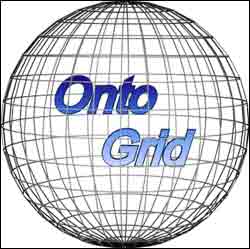Enter the Semantic Grid

OntoGrid Logo
To allow business and people to rapidly, and easily, establish virtual organisations to share information, services and computing resources a team of European researchers are laying the technological foundations that will open the door to the era of the Semantic Grid.
Working under the IST programme-funded OntoGrid project, they are catalysing the evolution of the Grid from a distributed network of computers in which the meaning of information is implicit and hidden into a medium that will allow computers as well as humans to interpret and share semantically-enriched data.
The upshot is a technological infrastructure in which semantically-aware middleware allows collections of resources – computing, storage, data sets, digital libraries, scientific instruments, businesses and people – to rapidly come together to form virtual organisations to solve a specific problem and disband just as easily once a solution is found. By overcoming cross-organisational, cross-industry and cross-country boundaries, and increasing interoperability by making semantic assumptions explicit, the Semantic Grid promises to aid organisations and businesses in any field where input from multiple and potentially highly differentiated actors is required.
“What we are doing is enriching the Grid with semantics,” explains Asunción Gómez-Pérez at the Universidad Politécnica de Madrid, and one of the OntoGrid coordinators. “This is a visionary initiative. Few other researchers are working in this area at present.”
To test its highly innovative approach, the project partners are developing two semantic applications to be run over Grid infrastructure. One will consist of an insurance settlement system linking together the various parties involved in resolving insurance claims as a way to reduce costs, increase cross-organisational collaboration and fight fraud. The other will offer quality analysis for satellite images, allowing users to transparently obtain and analyse information from different data centres.
“The insurance settlement system solves a very real problem facing the insurance sector: how to resolve claims in which many very different actors are involved,” notes Carole Goble, the OntoGrid’s technical coordinator at the University of Manchester.
“Imagine you crash a car in Spain that you rented in France with a German-registered car driven by a Dutchman: resolving the paperwork is a major problem,” Goble notes. Similarly, the lack of collaboration and communication mechanisms between insurers and other actors raises the potential for fraud. With a Semantic Grid application a virtual organisation linking all actors involved could rapidly be established to settle the claim using semantically-enriched information to overcome their procedural differences and ensure they all use the same terminology.
Middleware for any context
“The problem with the Grid that has existed to date is that it is rigid, systems aren’t easily configurable and there is no way to do things quickly,” the technical coordinator says. “In OntoGrid we are developing flexible and configurable middleware that can be reused.”
To do so, the project has developed Semantic-OGSA, a reference architecture that represents an evolution of the Open Grid Service Architecture (OGSA) and defines a mechanism for the explicit use of semantics in components and applications.
From a business perspective, the more flexible middleware will allow companies to be more agile in finding solutions to problems as and when the need arises, and is particularly beneficial in sectors where actors are distributed. The Semantic Grid middleware could also easily be connected to existing (legacy) systems.
The enhanced information aggregation and exchange the Semantic Grid provides also offers other benefits. The quality analysis system for satellite images, for example, would help aerospace firms collect different data streams from different organisations that use different processes and aggregate it for different purposes, whether it is weather analysis or crop assessment.
Though adopting Semantic Grid systems today is likely to entail large upfront costs for companies (as the technology is still under development), in Goble’s view it will pay off in terms of increased productivity and lower costs in the long term. But as the technology matures (which is something that OntoGrid is contributing to), the upfront costs should go down by orders of magnitude. And she is confident that such systems will be used widely in the future, probably in part thanks to the groundwork carried out by the OntoGrid researchers.
Media Contact
All latest news from the category: Information Technology
Here you can find a summary of innovations in the fields of information and data processing and up-to-date developments on IT equipment and hardware.
This area covers topics such as IT services, IT architectures, IT management and telecommunications.
Newest articles

Retinoblastoma: Eye-Catching Investigation into Retinal Tumor Cells
A research team from the Medical Faculty of the University of Duisburg-Essen and the University Hospital Essen has developed a new cell culture model that can be used to better…

A Job Well Done: How Hiroshima’s Groundwater Strategy Helped Manage Floods
Groundwater and multilevel cooperation in recovery efforts mitigated water crisis after flooding. Converting Disasters into Opportunities Society is often vulnerable to disasters, but how humans manage during and after can…

Shaping the Future: DNA Nanorobots That Can Modify Synthetic Cells
Scientists at the University of Stuttgart have succeeded in controlling the structure and function of biological membranes with the help of “DNA origami”. The system they developed may facilitate the…



